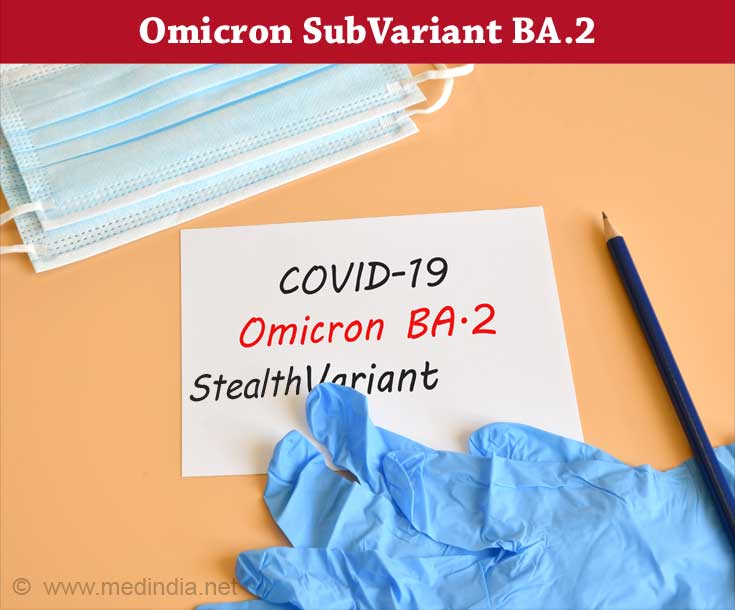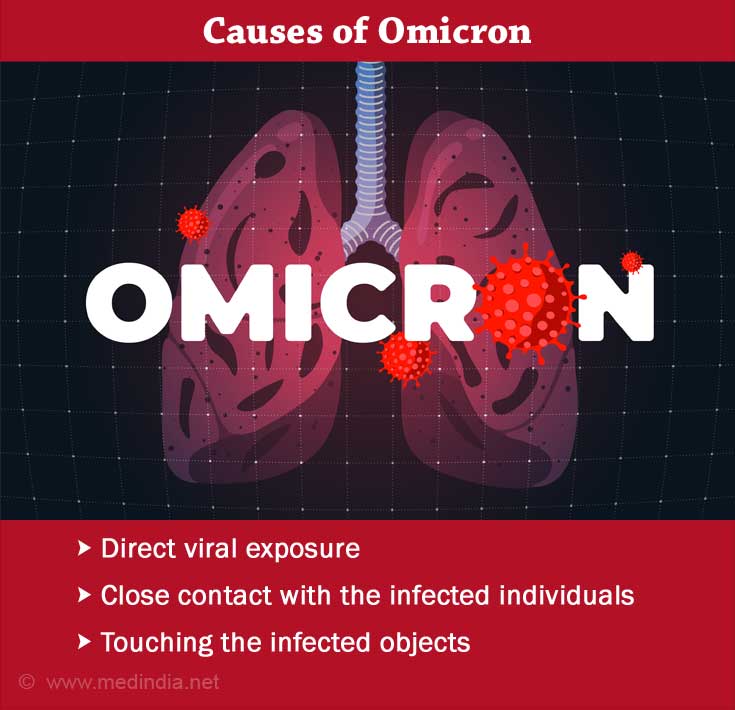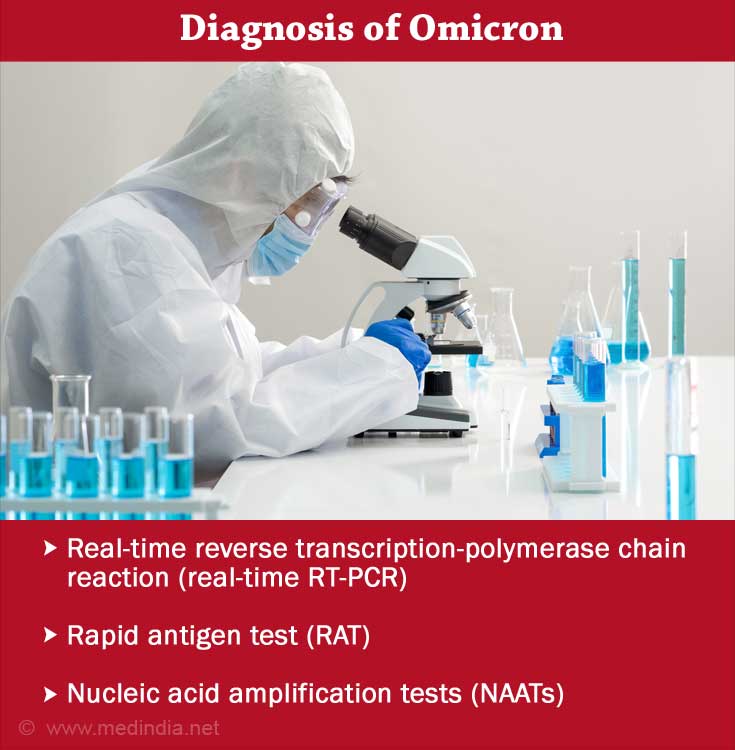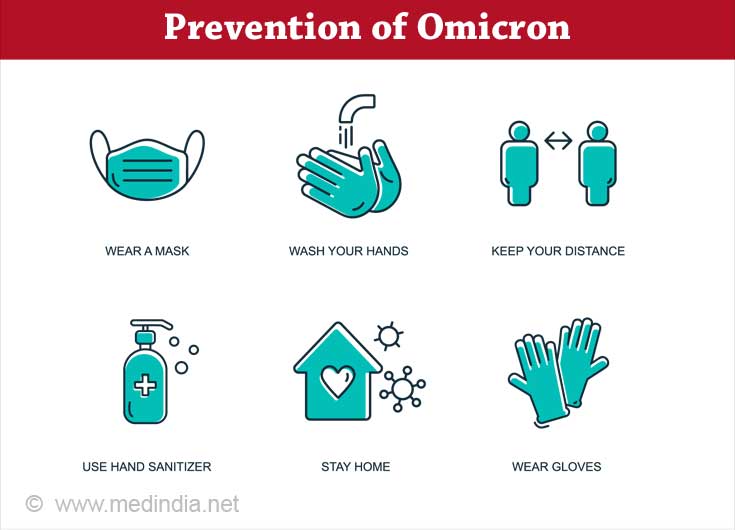- Classification of Omicron (B.1.1.529): SARS-CoV-2 Variant of Concern - (https://www.who.int/news/item/26-11-2021-classification-of-omicron-b.1.1.529-sars-cov-2-variant-of-concern)
- Update on Omicron - (https://www.who.int/news/item/28-11-2021-update-on-omicron)
- How is the COVID-19 Virus Detected using Real Time RT-PCR? - (https://www.iaea.org/newscenter/news/how-is-the-COVID-19-virus-detected-using-real-time-rt-pcr)
- Omicron Variant: What You Need to Know - (https://www.cdc.gov/coronavirus/2019-ncov/variants/omicron-variant.html)
- What we know about the Omicron variant - (https://www.unicef.org/coronavirus/what-we-know-about-omicron-variant)
- Omicron variant: What we know about this COVID-19 strain - (https://health.ucdavis.edu/coronavirus/COVID-19-information/omicron-variant)
- Had Omicron? You're unlikely to catch its rising variant - (https://www.nature.com/articles/d41586-022-00558-w)
- COVID Omicron Variant: What You Need to Know - (https://www.hopkinsmedicine.org/health/conditions-and-diseases/coronavirus/COVID-omicron-variant-what-you-need-to-know)
- Omicron variant of SARS-CoV-2: Genomics, transmissibility, and responses to current COVID-19 vaccines - (https://pubmed.ncbi.nlm.nih.gov/35023191/)
- SARS-CoV-2 Omicron variant - (https://en.wikipedia.org/wiki/SARS-CoV-2_Omicron_variant)
- Rapid antigen test - (https://en.wikipedia.org/wiki/Rapid_antigen_test)
- Nucleic Acid Amplification Tests (NAATs) - (https://www.cdc.gov/coronavirus/2019-ncov/lab/naats.html)
What is Omicron Variant?
COVID-19 pandemic continues to prevail with emerging variants as the coronavirus — severe acute respiratory syndrome coronavirus 2 (SARS-CoV-2) persistently evolves with its mutating strains. Among these variants’ mutations, certain genetic changes in the virus may make it more transmissible and contagious (than the original version in 2019) as observed in the Delta variant and the recently emerged Omicron variant.
Omicron strain of the SARS-CoV-2 (also known as variant B.1.1.529) has emerged as one of the heavily mutated viruses, which was first identified in Gauteng province, South Africa on November 25, 2021. It was first reported to the World Health Organization (WHO) from South Africa on 24 November 2021.
The first confirmed B.1.1.529 infection was traced from a specimen that was collected on November 9, 2021.
This new COVID-19 variant was assessed and named as “Omicron” by the WHO’s Technical Advisory Group on SARS-CoV-2 Virus Evolution (TAG-VE — an independent expert group for monitoring and evaluating the evolution/mutation of SARS-CoV-2) on 26 November 2021.
Variant of Concern: Omicron (B.1.1.529)
The rapidly spreading high-risk variant with its doubling time of 2 to 3 days has also been regarded as a variant of concern (VOC) by WHO on November 26, 2021.
Omicron is found to have a total of 60 mutations, in addition to a minimum of 32 spike protein mutations (prime antigenic target for several vaccines and antibody generation), 3 membrane protein mutations, and 6 nucleocapsid protein mutations.
It is found to have two main sub-lineages — BA.1 and BA.2, among which the latter is more contagious.
Due to its high antibody-evasive nature, the Omicron variant has resulted in yet another peak of COVID-19 cases in many countries. The virus more rapidly destructs the activity of neutralizing antibodies when compared to the original SARS-CoV-2 virus with 70 times faster multiplication rate than the Delta variant.
However, recent data has found that the Omicron variant is less severe than the earlier strains (91% lesser fatality rate than the Delta variant and 51% lesser hospitalization risk) due to its lower capacity to penetrate deeper lung tissues.
Nevertheless, with its unprecedented infection surge and risk of reinfection globally, the Omicron variant continues to remain as VOC. Henceforth, the WHO also cautions not to dismiss the variant as “mild.”
Omicron Subvariant BA.2 Facts
- First detected in South Africa in November 2021.
- It is often referred to as ‘stealth variant’ because it is slightly harder to track.
- The viral load for Omicron BA.2 is twice as much as the previously identified subvariant Omicron BA.1.
- 2 becomes a dominant strain in United States and Europe.
- The BA.2 variant represented 54.9% of new coronavirus cases for the week ending March 26, according to CDC data.
- 2 subvariant is 30% more transmissible than the original BA.1.

What are the Causes of Omicron?

One may contract the Omicron infection similar to other COVID-19 variants — either through direct exposure to the virus or through close contact with the infected individuals/touching the infected objects.
What are the Symptoms & Signs of Omicron?
The symptoms of the Omicron infection are:
Common Symptoms
Fever, fatigue/tiredness, generalized body ache, cough, congestion, sore throat, runny nose, and less commonly loss of smell or taste, headache, and diarrhea.

Grave Symptoms
- Difficulty in breathing/shortness of breath
- Chest pain
- Confusion
- Loss of speech or mobility
“The symptoms of omicron generally start with body aches or generalized weakness, fatigue, headache and fever in the initial days and eventually they might also develop a cough which is sometimes dry along with a cold where there is water from the nose, sneezing, etc. The cough is typically dry which resolves over the next few days. Most of the time i.e. in 80% of the patients, fever is resolving over the first 3 days and if not, then that becomes a sign of moderate to severe infection which needs close monitoring,” says Dr. Sonam Solanki, consultant pulmonologist and bronchoscopist, Masina Hospital.
How do you Diagnose Omicron?
The Omicron variant is diagnosed through a widely used gold-standard method for detecting, and tracking COVID-19 virus — real-time reverse transcription-polymerase chain reaction (real time RT-PCR). It is a molecular test to assess the presence of viral genetic material (ribonucleic acid or RNA) through a swab collection of samples from the upper respiratory tract (commonly nose and throat).

Other readily available diagnostic tests are:
- Rapid antigen test (RAT) — A rapid test that utilizes the principle of antigen-antibody interaction. The test kit helps detect the antibodies that are directed against the SARS-CoV-2 virus antigens (proteins on the viral surface) through nasopharyngeal samples. However, a positive test may require further confirmation with the RT-PCR test.
- Nucleic acid amplification tests (NAATs) — A highly sensitive viral diagnostic test for SARS-CoV-2 that amplifies the viral copies to detect its genetic material from even smaller amounts of viral materials. The test specimens are collected either from the upper or lower respiratory tract.
How can you Treat Omicron?
Although, there is no drug to treat the Omicron infection currently, several drugs like steroids, antivirals, and anti-inflammatory drugs may help reduce or manage the symptoms.
Management of the Omicron infection mandates curtailing the spread of the infection through timely COVID-appropriate measures.
“We know that the omicron infection is much more infectious than the other mutant which is why we have to be very cautious. It is very infectious that is why we need to be properly masked up in public spaces and in high-risk spaces like hospitals, medical facilities are very important. When you have symptoms and you need to step out for whatever reason you have to be in an N95 mask. A simple cloth or surgical mask may not suffice if you are symptomatic and coughing,” says Dr. Sonam.
Management Strategies that help curb the worsening of symptoms are:
- Isolate yourself when you are tested positive for COVID-19 — Omicron infection.
- Follow necessary quarantine measures.
- Take your medications on time; do not self-medicate.
- Stay hydrated. Drink plenty of water as dehydration may hamper the immune system gradually.
- Eat a balanced and nutritious diet to strengthen your immunity.
- Ensure plenty of rest and sound sleep; do not overstrain yourself.
- Plan for vaccination after your recovery — upon consultation with your doctor.
- Seek your primary physician/pulmonologist immediately in case of worsening symptoms.
How to Prevent Omicron?
- Reducing the risk of viral exposure is the key to preventing and protecting yourself (and your loved ones) from Omicron infection:

- Wear a mask as you step out in the crowd.
- Practice coughing into a bent elbow or tissue.
- Maintain a physical distance of at least 6 feet (about 2 arm’s length) from others.
- Wash your hands properly before eating, touching the face, and when touching the mask.
- Ensure proper ventilation at your home.
- Eat healthily, stay hydrated, and keep your immune system boosted.
- Seek immediate medical advice if any symptoms are suspected of COVID-19.
- Ensure to get vaccinated through WHO-approved COVID-19 vaccines when it’s your turn.







